How is the Cloth Woven?
Origin
Beginning with the skin of animals and the vines a million years ago, the primitive humans began to seek warmth and know how to hide, and the seeds of civilization sprouted from here. Looking back at history, just like chasing a star, I saw this brightest star reflected by the Seine River two thousand years ago. The Gauls wore trousers danced and drunk by the campfire. The star leaped again on the Nile River four thousand years ago, and the Egyptians washed linen and waited for the return of the warrior. I saw this star still hanging over the Yangtze River and the Yellow River 6,000 years ago. The Chinese people mulberry silkworms and aired the gorgeous silk. Starlight, I have witnessed the flower prints of the Caucasus, the woolen blouses of the Aegean Sea and the melodious bells on the Silk Road.
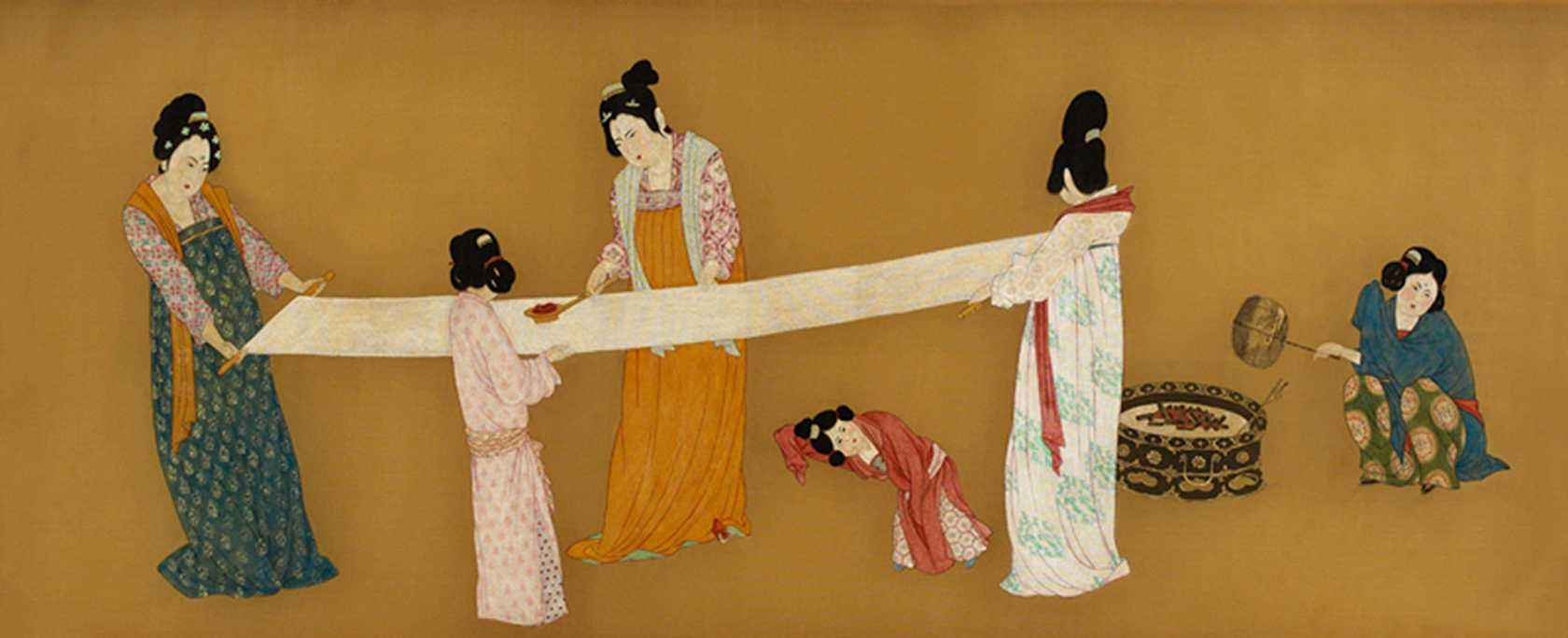
Origin
The life of all people is inseparable from clothing, food and shelter. Among them, clothing is the first place, and the prosperity of textiles has greatly promoted the advancement of civilization. From cotton, silk, chemical fiber and other fibers to fabrics before clothing, weaving is the most important part of this series.
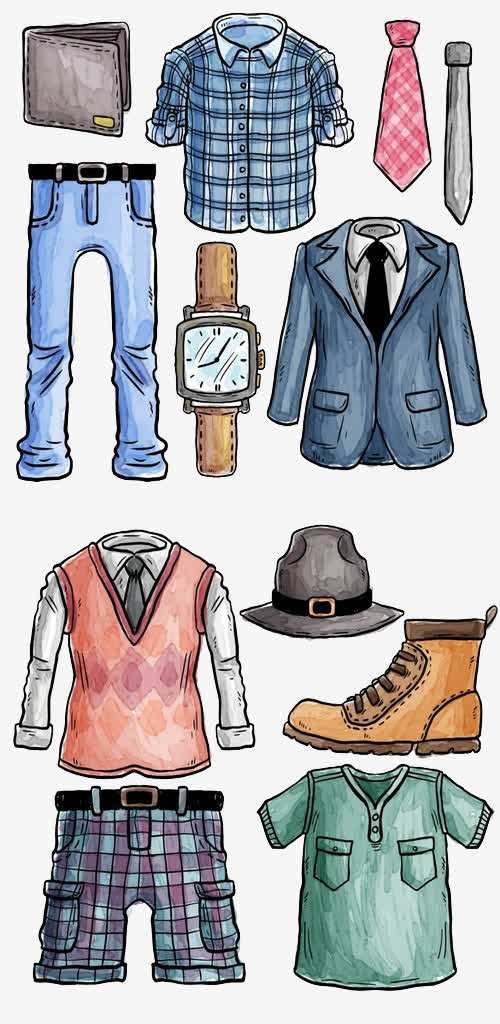
The life of all people is inseparable from clothing
Development
Since the beginning of the new century, with the sharp increase in market demand, along with the continuous improvement of mechanical technology and electrical automation, the traditional shuttle looms have been gradually eliminated due to their low speed and high noise. Instead, there is a shuttleless loom. The shuttleless looms in the current weaving factory mainly include rapier looms, air jet looms, and water jet looms. The main difference is that the weft insertion mechanism is different.
Rapier loom, air jet loom, water jet loom
Rapier loom: Holds the rigid or flexible rapier head and rapier to guide the weft.
Water jet loom: Using water as a weft insertion medium, the jet stream produces frictional traction on the weft yarn, and the weft yarn is introduced into the shed.
About water jet loom
In fact, the working principle of the three shuttleless looms is basically the same, but there is a difference in dealing with the part of the weft insertion. So today, with the water jet loom as the representative, we have a systematic understanding of the weaving machine and the weaving:
The water jet loom is a new type of shuttleless loom that emerged in the 1950s. It was invented by the V.Svaty who is a Czechoslovakian. The first water jet loom prototype in the world was exhibited at the Brussels International Textile Machinery Exhibition in 1955. After that, Japanese companies Tsudakoma, Toyota, Nissan, etc. all launched the world of water jet loom that has been known all over the world. Most of the water jet loom in the early market came from Japan. The water jet loom was developed from the 1970s in China. With continuous research, many famous machinery manufacturers have emerged and gradually occupy a certain market share.
The water jet loom is a shuttleless loom that uses a jet of water to pull the weft through the weaving. The frictional traction force of the water-jet weft insertion on the weft yarn is larger than that of the jet weft insertion, and the dispersion is small. It is suitable for the weaving of filaments such as synthetic fibers and glass fibers with smooth appearance. At the same time, the electrical conductivity of the fiber can be increased to effectively overcome the static electricity in the weaving. In addition, compared with the jet weft insertion, the water jet weft insertion consumes less energy and has the lowest noise because of the subtraction of the air compressor.
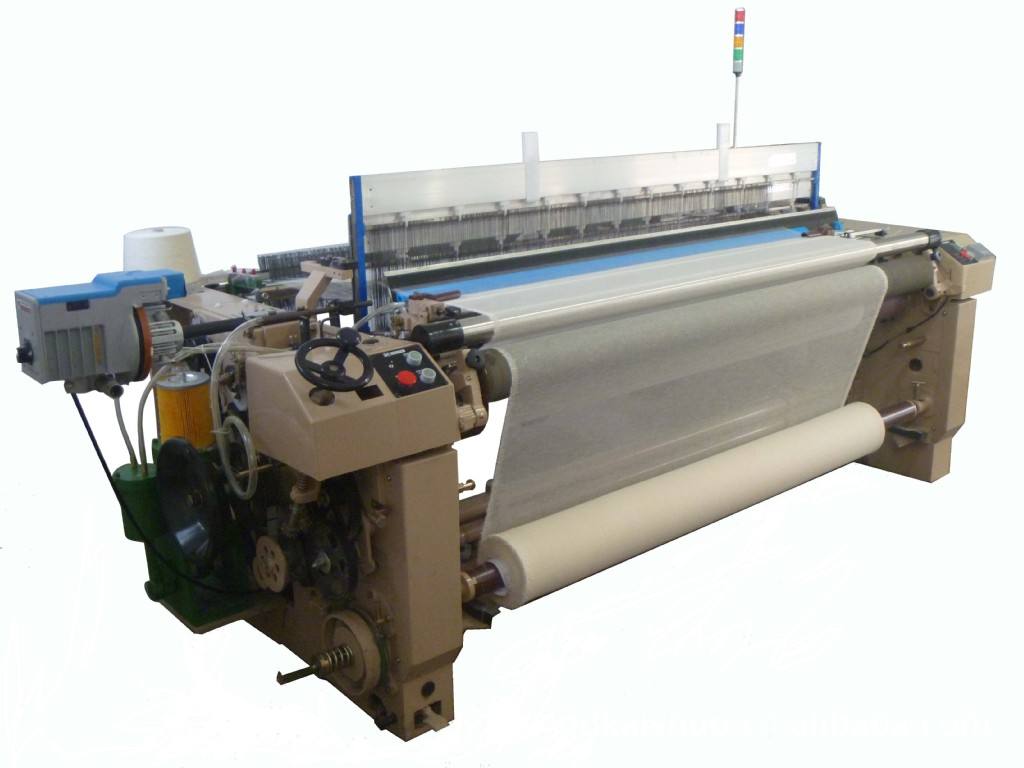
The water jet loom
The sequence of the weaving process of the entire water jet loom can be briefly described as:
1. The weft yarn is retracted from the weft bobbin and fed into the weft feeder. The weft feeder stores the fixed length weft yarn in the container, and the weft yarn passing through the weft feeder enters the nozzle through the gripper to be sprayed.
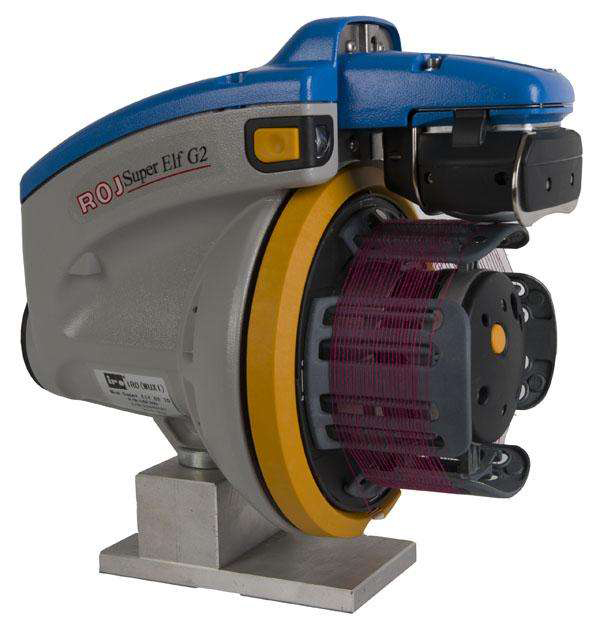
The weft feede
2. Under the action of the water pump, the water flow is sucked from the water tank. After the pressure is applied, a jet with a certain pressure is formed, which is sprayed from different nozzles after being controlled by the rotary valve, and the weft yarns of the different weft feeders can be introduced at different times. The weft yarn is carried at the nozzle.
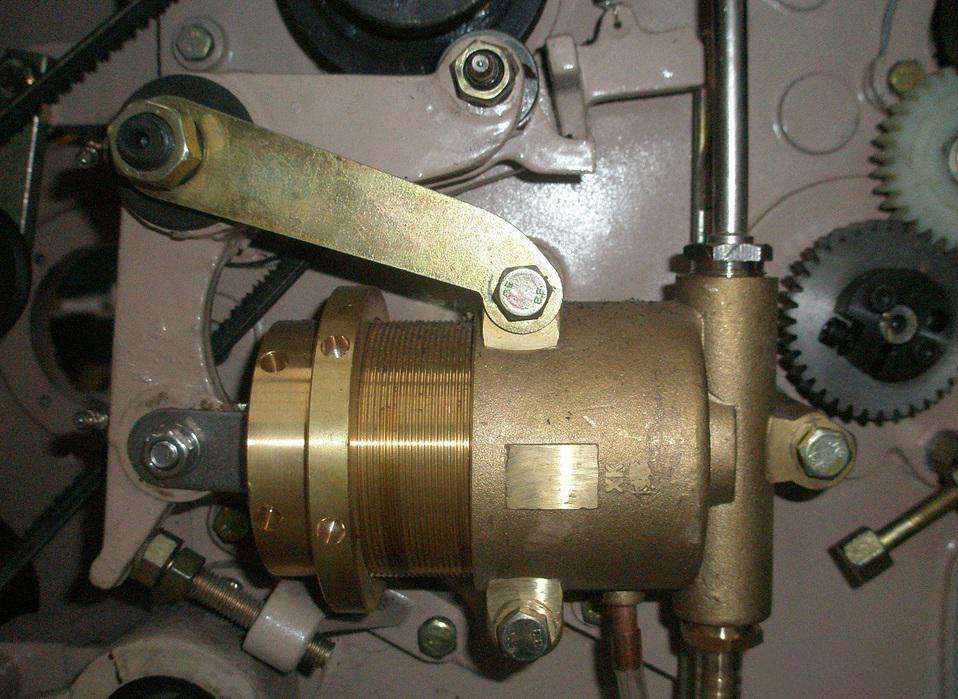
The weft yarn
3. Under the opening of the loom and the beating mechanism, the steel shovel hits the weft yarn to the weaving woven fabric and interweaves the warp yarn into a fabric. When the weft is used, the left side cutter cuts the weft, and the left and right sides have a hemming device to tighten the edge of the fabric.
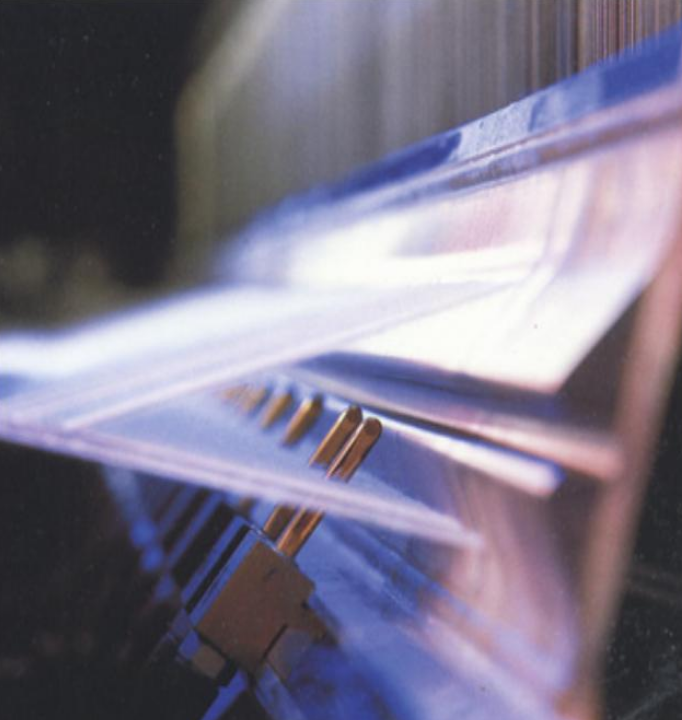
When the weft is used, the left side cutter cuts the weft, and the left and right sides have a hemming device to tighten the edge of the fabric
4. The function of the weft detector is to detect the state of the trailing edge of each weft yarn. Once the phenomenon of weft breaking or wefting occurs, the parking signal should be immediately sent to a fixed angle so that the driver can process the weft yarn in time.
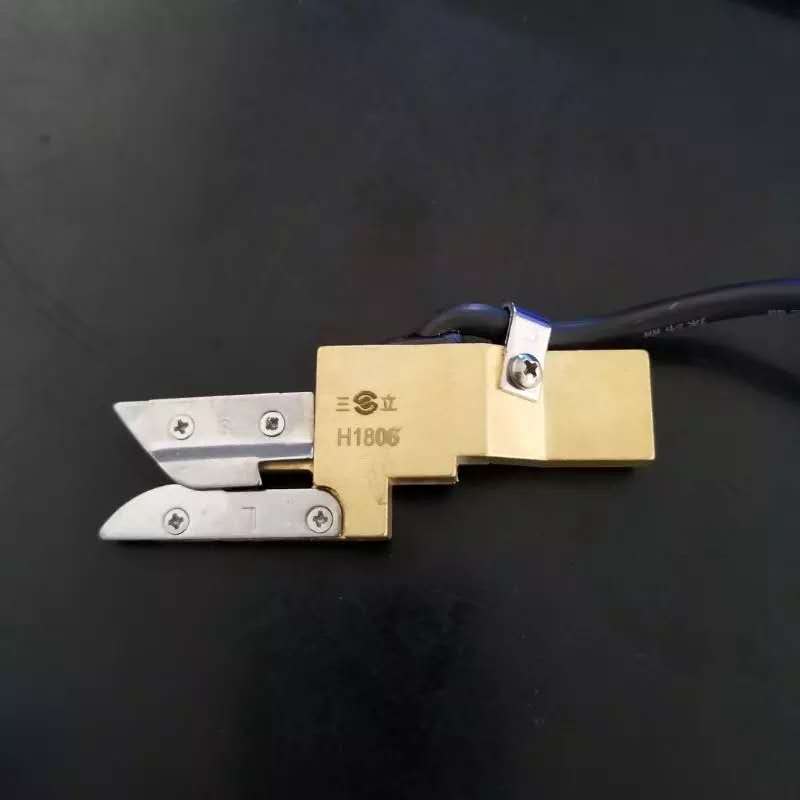
The function of the weft detector
5. After the warp and weft interlaced fabric, the remaining weft yarn passes through the right cutter, and the waste edge is cut off and sent to the waste edge collector through the yarn guide wheel. The fabric draws most of its moisture through the slits of the chest beam and is then fed into the roll of the fabric, and the entire weaving process ends.
From the perspective of mechanism movement, the loom work is the following five main movements. These movements are coordinated by mechanical and electrical equipment (including contactors, frequency converters, Servo Systems, etc.), which form a weaving process in a coherent manner:
1. Opening: According to the regular pattern of warp and weft interlacing, the spindle motor drives the heald frame up and down, and divides the warp yarn into upper and lower pieces to form the opening movement of the shed;
2. Weft insertion: the weft insertion movement of the weft yarn into the shed;
3. Beating-up: the beating axis drives the steel sill to move back and forth, and pushes the weft yarn introduced into the shed to the wefting movement of the weaving mouth;
4. Coiling: the take-up movement of the fabric away from the fabric forming zone;
5. Feeding: a warp movement in which warp yarns are placed from a weaving shaft into a work area.
Then, as a member of the industrial control industry, the author is most concerned about the electronic control part of the loom:
The control system of the water jet loom is similar to the functions of other shuttleless loom. It mainly guarantees the normal operation of the water jet loom, completing the quick start of the water jet loom (super start), positioning brake, electronic storage weft, electronic delivery, electronic winding and other tasks. And it need to have the following features:
1. The monitoring, adjustment, and production management functions of the loom work status, such as setting of loom parameters, setting of process parameters, monitoring of loom working status, and production data transfer networking.
2. Improve the product quality and variety adaptability of the loom, such as electronic multi-arm, electronic jacquard, electronic color selection, electronic coiling, electronic delivery, automatically find the weaving mouth, Anti-parking, tension monitoring, and weft length and so on.
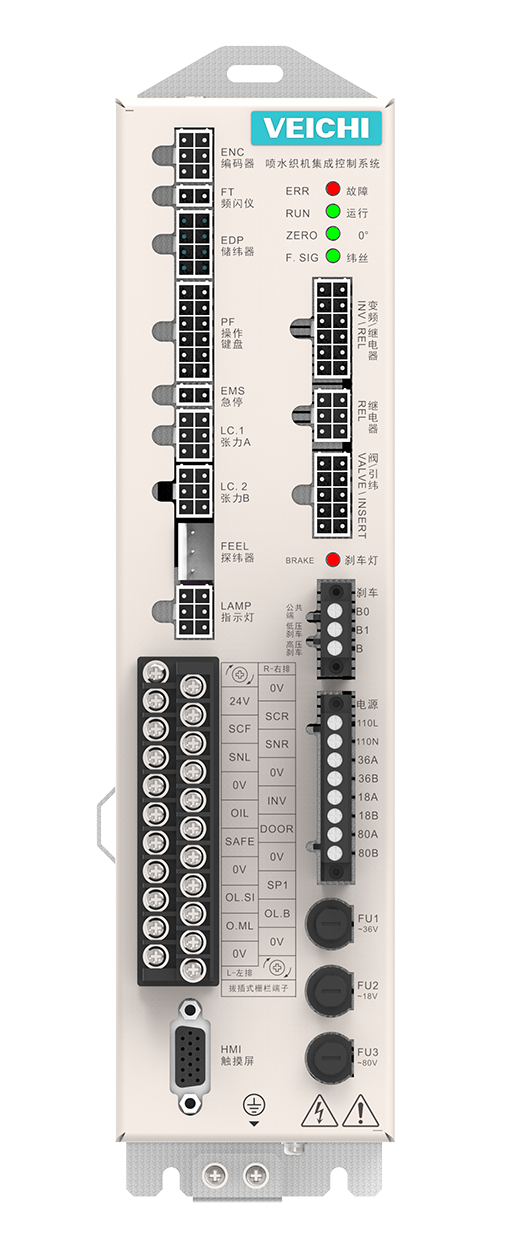
The loom controller
The author believes that under the joint progress of mechanical equipment and electrical equipment, especially the unremitting efforts of domestic enterprises, the domestic looms market will usher in a wave of localization, thus getting rid of the high cost constraints of foreign looms. And with the advancement of technology, the entire weaving process will continue to be improved, moving towards a highly intelligent, highly stable, highly integrated modern production model, when the Chinese will share the prosperity of textile with the nations of the world.
 Global - English
Global - English Spanish - Español
Spanish - Español French - Français
French - Français Russian - Pусский язык
Russian - Pусский язык Chinese - 中文
Chinese - 中文 Korean - 한국어
Korean - 한국어 Vietnamese - Tiếng Việt
Vietnamese - Tiếng Việt